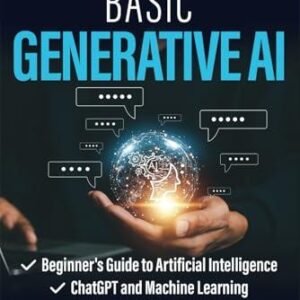In the rapidly evolving landscape of the digital age, businesses are confronted with unprecedented challenges and opportunities that demand innovative solutions. As enterprises strive to maintain competitive advantages, the integration of artificial intelligence (AI) has emerged as a transformative force, reshaping operations, enhancing customer experiences, and driving strategic decision-making processes. This article explores the multifaceted ways in which organizations are leveraging AI technologies to streamline workflows, harness data analytics, and foster a culture of innovation. By examining real-world case studies and best practices, we aim to provide insights into how enterprises can effectively navigate the complexities of digital transformation, positioning themselves for sustained growth in an increasingly AI-driven marketplace. As we delve into the implications of this technological paradigm shift, we highlight the critical role that leadership, strategy, and adaptability play in harnessing the full potential of AI for enterprise success.
Table of Contents
- Understanding the Role of AI in Modern Enterprise Transformation
- Identifying Key Areas for AI Implementation in Business Operations
- Developing a Strategic Framework for AI Integration
- Measuring Success: Key Performance Indicators for AI-Driven Enterprises
- Insights and Conclusions
Understanding the Role of AI in Modern Enterprise Transformation
As enterprises navigate the complexities of the digital age, artificial intelligence has emerged as a pivotal driver of transformation. By leveraging AI technologies, organizations can enhance operational efficiencies, streamline processes, and make data-driven decisions with unprecedented speed and accuracy. This integration allows for the automation of routine tasks, freeing up valuable human resources for more strategic initiatives. For instance, AI-powered analytics can uncover insights from vast amounts of data, enabling companies to adapt to market changes rapidly and anticipate customer needs effectively. To illustrate the impact, consider the following:
- Enhanced Data Analysis: AI enables predictive analytics, leading to informed decision-making.
- Improved Customer Experience: Chatbots and virtual assistants provide 24/7 support and personalized interactions.
- Operational Efficiency: Automating repetitive tasks reduces errors and increases productivity.
Furthermore, the role of AI extends into the domains of innovation and strategic planning. Companies can leverage machine learning algorithms not only to monitor trends but also to develop cutting-edge products and services that meet evolving customer expectations. This proactive approach fosters a culture of continuous improvement and agility, crucial in today’s fast-paced business environment. The following table summarizes key areas where AI can foster enterprise transformation:
| Area of Impact | AI Application | Benefits |
|---|---|---|
| Marketing | Predictive Analytics | Targeted campaigns that drive conversion. |
| Supply Chain | Smart Logistics | Optimized inventory management and reduced costs. |
| Human Resources | Recruitment Tools | Streamlined hiring processes and improved candidate matching. |
Identifying Key Areas for AI Implementation in Business Operations
To effectively harness the potential of artificial intelligence, businesses must pinpoint specific areas within their operations that are ripe for innovation. Consider focusing on processes that are repetitive, data-intensive, or require high levels of accuracy. These areas include:
- Customer Service Optimization: Implementing AI-powered chatbots and virtual assistants can enhance customer interaction while reducing operational costs.
- Data Analysis and Insights: Utilizing AI tools for large-scale data processing enables organizations to derive real-time insights that inform decision-making.
- Supply Chain Management: Machine learning algorithms can optimize inventory levels and predict demand, leading to more efficient operations.
- Marketing Personalization: AI-driven analytics can help tailor marketing strategies to individual consumer preferences, improving engagement and conversion rates.
Adopting AI effectively necessitates a thorough assessment of existing workflows to identify inefficiencies and opportunities. By establishing clear objectives and aligning AI initiatives with business goals, organizations can create a roadmap for integration. Key considerations for successful implementation include:
| Consideration | Description |
|---|---|
| Scalability | Ensure AI systems can grow with the business. |
| Alignment | Integrate AI solutions with existing business objectives. |
| Security | Prioritize data protection and compliance measures. |
| Training | Implement training programs for employees to leverage AI tools effectively. |
Developing a Strategic Framework for AI Integration
In order to successfully incorporate artificial intelligence into business operations, it is vital to construct a well-defined strategic framework. This framework should align AI initiatives with overall business objectives, ensuring that efforts contribute meaningfully to growth and innovation. A few critical components of this framework include:
- Clear Vision: Establish a long-term vision for AI, outlining desired outcomes and impact on the organization.
- Stakeholder Engagement: Involve key stakeholders from various departments to foster collaboration and address diverse needs.
- Resource Allocation: Assess and allocate the necessary resources, including talent, technology, and budget, to support AI initiatives.
- Risk Management: Identify potential risks and develop mitigation strategies to ensure responsible AI deployment.
Furthermore, measuring the success of AI integration is essential to refining strategies and enhancing effectiveness. Organizations can utilize tailored metrics that address both qualitative and quantitative aspects of their AI initiatives. Below is a simple table that outlines some suggested metrics:
| Metric | Description | Purpose |
|---|---|---|
| ROI on AI Projects | Measure the financial return generated from AI investments. | To assess financial effectiveness. |
| User Adoption Rate | Percentage of employees utilizing AI tools. | To evaluate engagement and acceptance. |
| Innovation Index | Number of new AI-driven products or services launched. | To monitor innovation and competitive advantage. |
Measuring Success: Key Performance Indicators for AI-Driven Enterprises
In the evolving landscape of AI-driven enterprises, establishing clear Key Performance Indicators (KPIs) is essential to assess the effectiveness of AI initiatives. These metrics not only provide insights into operational efficiency but also help in aligning AI strategies with broader business objectives. Some critical KPIs to consider include:
- Operational Efficiency: Measures improvements in processes and workflows attributable to AI.
- Customer Satisfaction: Gauges user experience and loyalty through AI-enhanced services.
- Cost Savings: Evaluates reductions in operational costs achieved through automation and AI integration.
- Time to Market: Assesses the speed at which AI initiatives are developed and deployed.
Furthermore, organizations should focus on tracking performance over time to monitor return on investment (ROI) from AI expenditures. Implementing a robust framework for analysis will involve the following steps:
- Data Collection: Gather relevant data from AI applications and customer interactions.
- Benchmarking: Compare your performance against industry standards and competitors.
- Continuous Improvement: Regularly update strategies based on insights gained from KPI analysis.
| KPI | Definition | Importance |
|---|---|---|
| Operational Efficiency | Improvement in workflow processes | Enhances productivity |
| Customer Satisfaction | User experience and loyalty scores | Drives retention and advocacy |
| Cost Savings | Reduction in costs from automation | Increases profitability |
| Time to Market | Speed of deploying AI solutions | Enhances competitive edge |
Insights and Conclusions
the integration of artificial intelligence into enterprise operations is not merely a trend but a fundamental shift poised to redefine how businesses thrive in the digital age. By harnessing the power of AI, companies can streamline processes, enhance decision-making, and unlock innovative capabilities that drive growth and competitive advantage. As we navigate this technological landscape, it becomes increasingly clear that those who adopt AI-driven strategies will not only survive but flourish. Embracing this transformation requires a forward-thinking approach, a commitment to continuous learning, and an openness to change. As enterprises embark on this journey, the potential for increased efficiency, improved customer experiences, and robust scalability will unfold, making AI an indispensable ally in crafting the future of business. The time to act is now; seize the opportunity to lead in a world where AI is a cornerstone of enterprise success.





